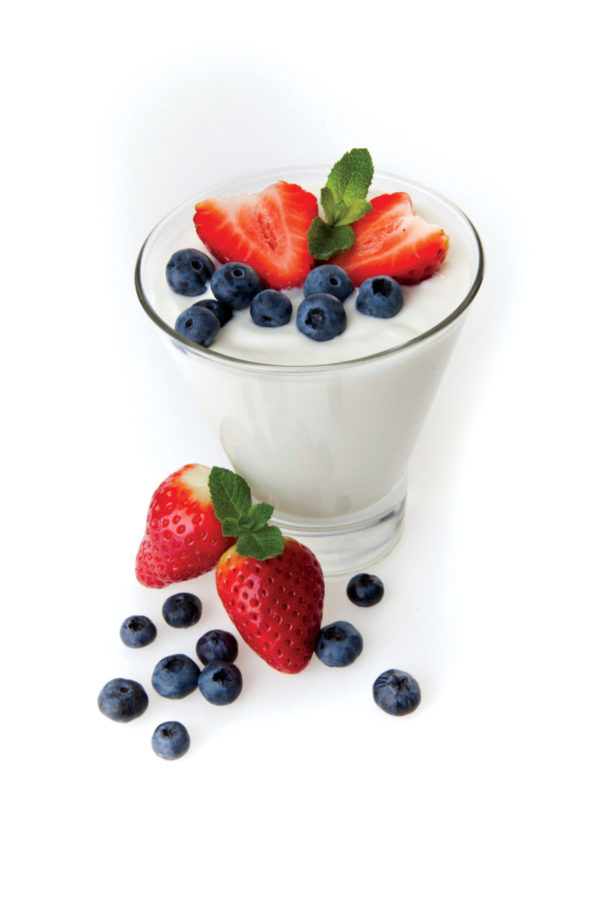Stability and Rheological Properties of Stirred Yogurts

Project entitled:
Impact of Process Dynamics and Composition of Fermented Dairy Products on their Stability and Rheological Properties
Sylvie Turgeon, Daniel St-Gelais, Sébastien VilleneuveHighlights
- The province of Quebec produces more yogurt (80%) than anywhere else in Canada.
- A number of factors determine yogurt properties, including the type of bacteria, milk composition (total solids, fats, serum protein/casein ratio) and the production process conditions.
- To date, most research has been completed on firm yogurt, whereas in Canada, stirred yogurt is mainly consumed. Stirred yogurt is obtained by breaking the gel after fermentation in tanks.
- During the conditioning process (stirring, pipe flowing and pumpage), the product is subject to shearing constraints which result in the destructuring of the protein matrix affecting the rheological properties. Once it has been packaged, the stirred gel is stored at a cool temperature and the gel particles can once again interact to partially reestablish the gel properties. At the time of consumption, the yogurt must have textural properties that are acceptable to consumers.
Objectives
Our hypothesis is that the composition and conditioning stages of stirred yogurt affect the final yogurt characteristics.
Specific objectives :
- To determine the effect of curd shearing during the production process on the rheological properties and quality of yogurt.
- To determine the effect of the dairy mix composition on the sensitivity of curd to shearing and on its rheological properties.
- To determine the impact of production parameters and cooling speed on the rheological properties of stirred yogurt.
Results and potential benefits
Results:
- Composition determines the properties of stirred yogurt. A high fat content reduces syneresis and increases firmness and viscosity when stored at 4°C. The source of serum proteins (whey protein isolate vs. milk protein concentrate) has a slight effect on syneresis and varies depending on the smoothing temperature.
- Increased shearing during conditioning (test) reduces firmness and viscosity except in the presence of a high fat content. For fat-free yogurt, it would be preferable to reduce shearing intensity. For high-fat yogurt, increased shearing reduces syneresis.
The test has demonstrated that only smoothing and cooling had an impact on syneresis, firmness and viscosity. During storage, stirring speed also had an impact. The sequence of the condition stages is important; different properties are obtained depending on whether smoothing is completed before or after cooling.
Outcomes:
- Better control of production parameters and increased quality of stirred yogurt (increased consumer satisfaction, decreased downgrading of products, increased profitability). Requires a validation project conducted in-plant.
Professionals trained
Currently, three master’s students are being trained in this project.
- Valérie Guénard-Lampron is completing a thesis on the effect of the conditioning parameters of stirred yogurt on its rheological properties.
- Noémie Lussier is completing a thesis on the role of fat content and fermentation speed on the development of the rheological properties of yogurt during stirring and storage.
- Marc-Olivier Leroux is completing a thesis on the impact of cooling speed on the stability and rheological properties of stirred yogurt.
Currently, one doctoral student is being trained in this project.
- Audrey Gilbert is completing a thesis on the impact of process dynamics and the composition of fermented dairy products on their functional properties.
Financial contributions
Partnership for innovation in dairy production and dairy processing (EPI2011-2017):
- Fonds de recherche du Québec – Nature et technologies
- Ministère de l’Agriculture, des Pêcheries et de l’Alimentation du Québec
- Novalait
The scholarship FAST from INAF under the CRSNG CREATE program was granted to Audrey Gilbert, covering the first two years of her Ph.D. when she was not yet eligible for funding by this project.